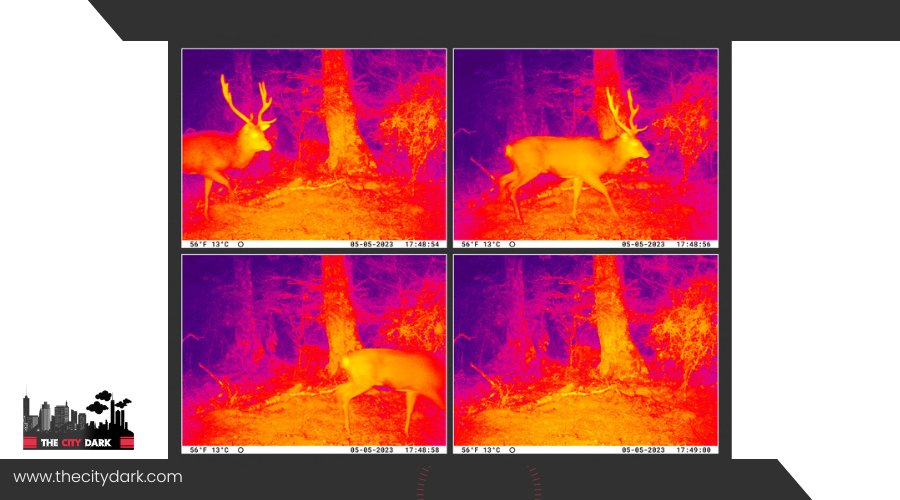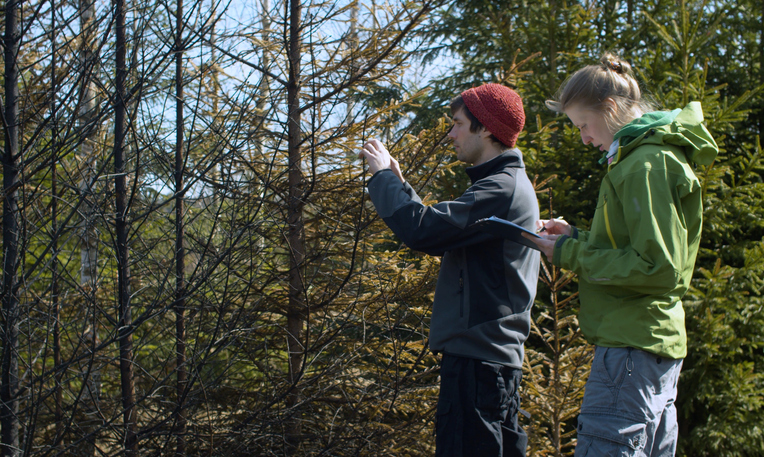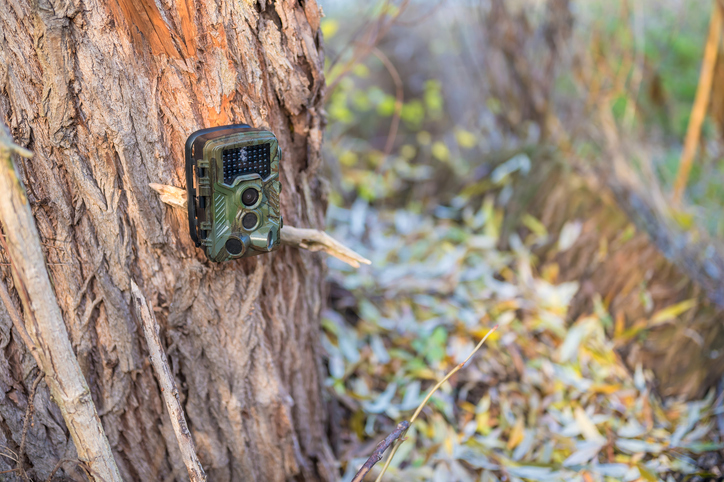Certainly, night vision aids in wildfire control. It boosts images, senses heat, and unveils fires at night. This early detection improves management. Thermal cameras provide clear, real-time views, piercing smoke and darkness. These tools enhance awareness and prompt faster responses, saving terrain and lives. Night vision reshapes wildfire battles, offering unmatched precision and efficiency. Explore its impact on firefighting.
Key Takeaways
- Night vision spots wildfires early by seeing hotspots and temperature changes.
- It makes the night clearer, helping firefighters work better and faster.
- Thermal imaging, key in night vision, cuts through smoke to spot hidden fires, helping aim efforts right.
- Used with drones or helicopters, night vision scans big areas fast, helping manage land well.
- Night vision gives crucial information, helping choose where to fight fires early and effectively.
Night Vision Basics
Night vision technology turns the faint glow of night into clear sight. This tech is crucial when battling the unpredictable nature of wildfires. Night Vision Goggles (NVGs) use image boosting and heat sensing to cut through darkness. They don’t just help you see; they change how you act in the night.
Thermal imaging spots temperature differences, letting you find hotspots and flames. This is key for watching fires at night when usual methods don’t work. Also, night vision gadgets have infrared light, making sure total darkness doesn’t leave you blind. This lets pilots fly and fight fires safely at night.
Knowing how night vision works, from making dim light bright to finding infrared light, helps you understand its role in spotting and handling wildfires. It’s more than seeing in the dark; it’s about having an upper hand in battling wildfires.
Enhanced Wildfire Detection
As wildfires spread, using night vision technology is crucial for early detection, even in darkness. Night vision improves visibility in low light, changing how we detect wildfires. Thermal cameras help find hotspots and fires at night, crucial for quick response to these dangerous events.
Night vision makes it easier to see potential dangers, leading to better firefighting. This technology not only helps find fires sooner but also improves situational awareness. This results in smarter decisions and more effective wildfire management.
Using night vision in wildfire strategies is vital. It ensures quick and efficient response, reducing the damage caused by fires.
Nighttime Monitoring Advantages
Night vision technology transforms night wildfire monitoring. It allows for early hotspot detection, tracks fire spread, and guides firefighting. This technology minimizes damage and protects property effectively during night hours.
Enhanced Visibility After Dark
Employing night vision technology significantly improves overseeing wildfires in darkness, allowing a clear perspective on upcoming challenges. This technology enhances visibility, enabling effective terrain management, hazard identification, precise fire targeting, and monitoring of ground units at night.
For pilots, night vision goggles become crucial, assisting in navigating and pinpointing varying fire intensities, thus making firefighting operations more efficient. The use of specialized lights and infrared technology is key in detecting and following wildfires in dim conditions. By utilizing night vision for night surveillance, operational efficiency isn’t just boosted; accident risks are minimized, enhancing the safety of teams combating wildfires.
Early Detection Capabilities
Building on night vision’s strengths in improving visibility in darkness, its role in early wildfire detection capabilities marks a significant advancement in nighttime monitoring and management. Night vision technology boosts your ability to spot and track fires after the sun goes down, offering crucial hours for early detection and action. Here’s how it revolutionizes wildfire detection:
| Advantage | Description |
|---|---|
| Better Visibility | Lets you see through smoke and dim light, catching hotspots early. |
| Round-the-Clock Monitoring | Keeps watch day and night, ensuring uninterrupted vigilance. |
| Swift Response | Helps in quick sharing of information with control centers for prompt action. |
| Improved Fire Management | Results in focused firefighting efforts with improved awareness of the situation. |
Integrating Thermal Imaging
Incorporating thermal imaging into the surveillance of wildfires transforms our approach to spotting and controlling fire outbreaks, even when visibility is low. This technology isn’t just an addition to what we already use; it’s a game-changer in detecting and managing fires.
Thermal imaging does much more than allow us to see in the dark. It offers essential insights, enabling us to find potential fire areas early and improve our understanding of the situation. This technology spots trouble spots well before they’re visible without aid or through conventional monitoring.
The advantages are clear:
- See Through Smoke: Thermal imaging penetrates smoke and fog, revealing hotspots.
- Wide Area Surveillance: When attached to drones, helicopters, or planes, it covers large, hard-to-reach areas.
- Understand the Fire: It aids in tracking the fire’s spread or growth, helping to plan responses.
- Save Resources: By focusing on specific concerns, it uses resources wisely, saving time, money, and lives.
Operational Challenges
Exploring the operational challenges of using night vision in wildfire monitoring reveals difficulties such as identifying fires in darkness, navigating environmental conditions, and confronting equipment limitations. Comprehending these challenges and their impact on night vision technology’s effectiveness, along with identifying solutions, is crucial. Equip yourself with proper knowledge and tools to surmount these obstacles, improving wildfire management.
Detecting Fires at Night
Detecting wildfires at night demands specialized tools, notably night vision goggles and thermal imaging sensors, for precision. Night vision technology becomes crucial, offering a significant edge in the early spotting and handling of fires.
- Night vision goggles and thermal cameras prove vital for both firefighters and pilots, allowing visibility through smoke and darkness.
- Infrared sensors accurately pinpoint hotspots, essential for identifying fire locations at night.
- Effective communication between ground teams and aerial support is crucial, ensuring prompt and efficient wildfire responses.
- Using night vision to monitor fire behavior aids significantly in informed decision-making, enabling quick adaptation to evolving situations.
These tools and tactics are key in combating nighttime wildfires, providing a chance to control fires before they expand wildly.
Environmental Conditions Impact
When facing smoke and dim light, night vision’s role in tracking wildfires varies greatly. Dense smoke and haze, common in wildfires, pose big challenges. These barriers reduce visibility, making it harder to detect wildfires effectively. Also, the low light at night can impact night vision’s clarity and range, affecting its ability to spot and track fires. Moreover, infrared radiation from flames might overwhelm night vision sensors. Bad weather, like rain or fog, adds to the challenge, affecting night vision’s performance in wildfire management.
Equipment Limitations and Solutions
In the challenge of monitoring wildfires, night vision equipment proves crucial but faces obstacles, especially in discerning fire intensities and heat sources amid varying environments. To surmount these hurdles:
- Merge night vision with thermal imaging to better detect heat in dim light.
- Maintain and calibrate regularly to ensure night vision gear operates optimally.
- Train personnel to adeptly utilize night vision in tracking wildfires.
- Combine night vision with other monitoring tools, such as drones or satellites, for comprehensive surveillance and effective management.
These strategies enhance the use of night vision in managing wildfires, ensuring efficient and effective detection and monitoring, no matter the conditions.
Future Directions
Looking forward, the creation of advanced night vision systems promises to change how we handle wildfires. Night vision, already impactful, is set to revolutionize wildfire monitoring. When traditional methods falter in dim conditions, these systems shine. They enhance our understanding, allowing visibility through smoke and darkness to gauge the fire’s scale and strength. This clarity does more than watch over; it equips us with vital data for swift decision-making.
Incorporating night vision into aerial firefighting efforts goes beyond mere observation from the skies; it means deploying resources with greater precision and safety. Identifying hotspots and sudden flare-ups unseen by human eyes at night enables early suppression, preventing potential disasters. The future of managing wildfires relies on advancing night vision technology. As research progresses, expect to see more effective strategies emerge, shifting the balance in our fight against wildfires.
Frequently Asked Questions
Why Do Firefighters Not Use Night Vision?
Firstly, visibility challenges present a significant hurdle. Secondly, the expense of the equipment is substantial. Thirdly, learning how to use it demands extensive training. Fourthly, there are concerns for safety. Additionally, operational restrictions play a part, alongside the necessity for further technological progress to facilitate its use.
What Are Some Wildfire Management Strategies?
Managing wildfires through forest thinning, controlled burns, and establishing firebreaks. Educate communities, ensure early detection, and plan emergency evacuations. These approaches improve wildfire management.
How Do You Monitor Wildfires?
Use satellite imagery, drone surveillance, and smoke detection. Employ thermal cameras, ground patrols, and remote sensors to track fires. Ensure quick, effective responses. Keep it simple.
What’s the Difference Between Night Vision and Infrared?
Night vision makes light brighter. Infrared sees heat.
Conclusion
Indeed, night vision revolutionizes wildfire monitoring and management. This technology not only improves detection but excels in nighttime surveillance. Adding thermal imaging reveals hidden hot spots. Challenges exist, including operational complexities and training needs. However, the promise for transforming wildfire management is clear. Advance and ensure safety.



